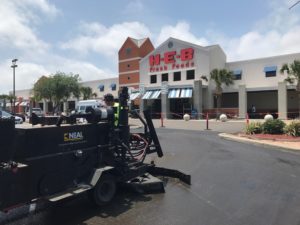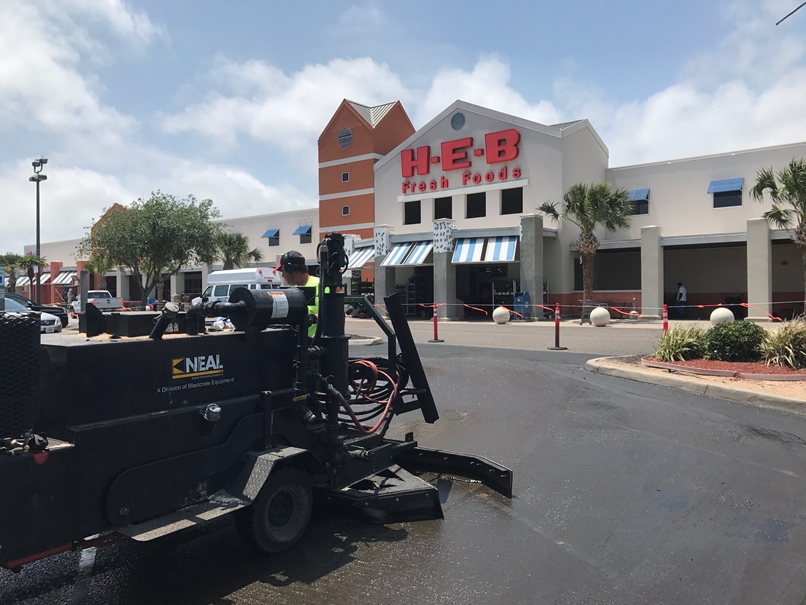
If the Wind Speed Is Too Low, How Will It Affect an Asphalt Sealcoating Job?
Liquid sealcoating contains a great deal of water, and the water molecules must escape into the air for evaporation to occur. As the water molecules escape, they collect in the air just above the liquid sealcoat. The air can quickly become so saturated that there is no room for more water molecules to escape. If there is a light, steady breeze, the wind will move the escaped molecules out of the way so that more water can leave the sealant. On a windless day, the rate of evaporation will be slowed or halted completely. Asphalt paving lot sealcoating is normally applied in two thin coats, and the first coat must dry before the second one can be applied. The second coat must dry before your pavement maintenance contractor can reapply your painted markings and stripes. Therefore, your sealcoating contractor will need to keep your parking lot closed for a longer time because of the slow rate of evaporation. Parking lot maintenance companies prefer a wind speed of around 5 mph when applying sealcoating.
If the Wind Speed Is Too High, How Will It Affect an Asphalt Sealcoating Job?
High winds can be a problem for an asphalt company performing a variety of jobs, but they are especially problematic for a sealcoating contractor.
1. The spray pattern can be disrupted by the wind, preventing a uniform coating and leaving poorly protected patches of pavement.
2. High winds can dry the top layer so quickly that liquid sealant is trapped below it. The liquid sealant continues to flow, cracking the top layer.
3. The sealant can be blown onto buildings, fences, cars, walls, sidewalks, shrubs, grass, and other places where it does not belong.
4. Grass clippings and other debris can be blown onto the wet sealant. Forcibly removing trash or vegetation can damage the sealant.
For superior sealcoating work, turn to Marathon Solutions Group. We are a well-respected Houston concrete and asphalt company offering an extensive list of services, including sealcoating, asphalt paving, concrete repairs, asphalt milling, parking lot striping, concrete installation, thermoplastic markings, asphalt resurfacing, marking removal, asphalt crack repair, bollard installation, parking lot signage, and asphalt maintenance programs. We have earned an exemplary reputation for consistency, craftsmanship, and customer service. If you would like to request a free quote, you can email Sales@Marathon-Solutions.com, submit the online form, or call 800-879-1147.


